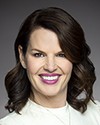Greetings. My sincere apologies for arriving late due to technical barriers with my system here. There was no disrespect intended to the committee. My apologies, and thank you to the staff for their support.
I would say, first, as the father of four visibly indigenous women and as a first nations man who grew up right along the Highway of Tears—the Highway of Tears runs right through our Carrier First Nation's territory—the statement and the statistics that you cite are the lived experience of indigenous women in this country. For those of us with visibly indigenous women in our families, we know that those statistics apply not just to indigenous women who are vulnerable or who have high-risk lifestyles.
The question that you raise, the “why”, has some deep roots at an institutional level in this country. The presence of systemic racism and statutory racism has affected and specifically displaced indigenous women and disrupted the matriarchal systems that we had in place. That persists today in every system. As you know, for example, in the month of January, the percentage of incarcerated women in Canada who were indigenous exceeded 50% for the first time. So we have indicators showing that we are going in the wrong direction in terms of how incredibly marginalized, unsafe and unsupported indigenous women are in relation to other women, and certainly in relation to Canadians writ large.
These challenges that result in our women being murdered, being abducted and going missing are intergenerational. They are systemic. They are statutory and regulatory. One of my late recommendations here regarding systemic barriers inside our policing systems, including within the RCMP, is for indigenous women to be seen through a lens of respect and equality and not to be seen through this narrative that they are less than and/or often intoxicated and/or not to be trusted and not to be taken at their word, as the previous speaker mentioned.
Part of our theory of change in those broad contexts is simple. It's to increase ceremony in whatever way makes sense for those systems, and to call forward—




